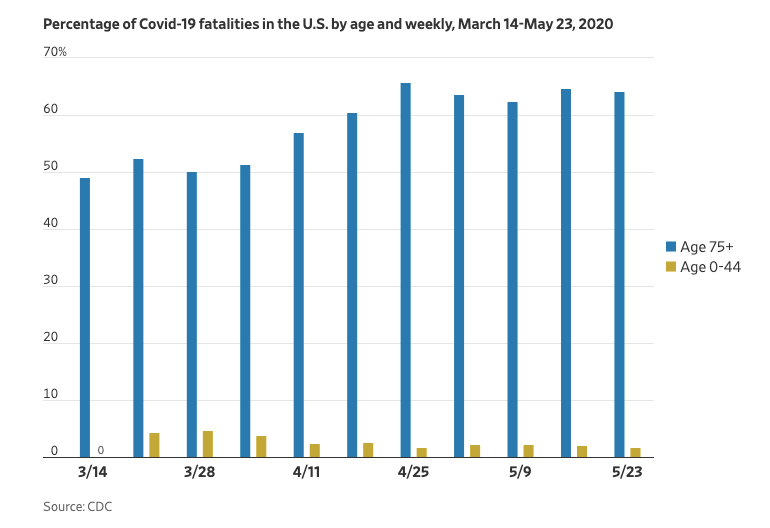The Modelers Thought of Everything Except Reality

As a site focused on economics, AIER would rather have stayed away from commentary on diseases and their mitigation. In normal times, we would have.
The archives of AIER dating back to 1933 show that we had no comments on the polio epidemic (1948-1951), the Asian Flu (1957-59), the Hong Kong flu (1968-69), the Avian bird flu (2006), or the Swine flu pandemic of 2009, which was a strain most like 1918 and therefore, one might suppose, would have caused panic but did not.
We had nothing to say because disease mitigation is a job for medical professionals, not economists and certainly not politicians.
The problem is that this time, the disease mitigators (some of them, the ones in power and with the ear of politicians) didn’t stay out of economics. Indeed, their plans for mitigation trampled all over commerce, life, and the freedoms that are necessary to make it function. For a few months in 2020, the presumptuous model-building disease mitigators became central planners, overriding the wisdom of not only medical professionals but also economists, philosophers, political scientists, historians, and everyone else including legislatures and voters.
Our first piece on the topic ran January 27. The focus was on the quarantine power and the argument was simple: because people are not ridiculous and know how to deal with disease in consultation with medical professionals, this state power should not be deployed. At the time, people said we were being alarmist even for saying this. Nothing like this could ever happen in the U.S. because we have a Constitution and courts and a tradition of trusting the people.
It turns out, of course, that we underestimated the threat of coercion. It wasn’t just about quarantining the sick. It was about putting the whole of the country (but for a few governors who heroically resisted) under lockdown. This brought about economic collapse (and increasingly social and cultural collapse too). We chronicled the disaster in real time on this site, which became an essential go-to source for factual information and rational analysis – in contrast to the mainstream media which was pushing for panic and lockdown.
On April 2, we published our first set of commentaries: Coronavirus and Economic Crisis, edited by Peter C. Earle. Amazon would not permit the Kindle edition to go live. They have admitted to us that they “incorrectly blocked” the book. There is no going back but it remains a reality: AIER’s influence was blocked when it was most needed. It’s the fourth time in our history we’ve been censored.

Those were censorious times. It is however available now.
Much of the commentary focused on the absurd failures of the models being used by a handful of statisticians and epidemiologists. They predicted as many as 2.3 million deaths in the United States (the New York Times went one better and predicted 8.25 million deaths) if government didn’t crack down and shutter nonessential business, and lock hospitals down to become COVID-only zones.
Economists know something about the incredible failure of forecasting models. They have been deployed often in the postwar period. They came under heavy fire from economists of the Austrian and classical schools. They don’t grapple with certain facts of reality: second and third tier responses to policies, unpredictabilities of human choice, and the uncertainties of the future. There are too many variables operating in a complex system like a socio-economic order for any mechanistic model to capture them all, especially when dealing with an unknown and unknowable future.
The same forecasting failures afflicted the models that panicked politicians into locking down. They are too aggregated. They don’t consider population diversity and how novel viruses affect different groups in different ways. They presume that planners can know things that they cannot know, such as disease severity in the midst of an epidemic. Slogans like “flatten the curve” massively oversimplify social processes and human choices, and presume to know far too much about cause and effect.
It turned out of course that the models were horribly wrong, not only about the large death numbers but also about hospital capacity, unseen costs, economic effects, and even the demographics of the affected population. Remarkably, none of the models even considered the impact of the virus on long-term care facilities, and hence contributed to gross neglect of the population that should have received the bulk of the focus.
The Wall Street Journal sums up the blizzard of data rather sharply:
About 80% of Americans who have died of Covid-19 are older than 65, and the median age is 80. A review by Stanford medical professor John Ioannidis last month found that individuals under age 65 accounted for 4.8% to 9.3% of all Covid-19 deaths in 10 European countries and 7.8% to 23.9% in 12 U.S. locations.
For most people under the age of 65, the study found, the risk of dying from Covid-19 isn’t much higher than from getting in a car accident driving to work. In California and Florida, the fatality risk for the under-65 crowd is about equal to driving 16 to 17 miles per day. While higher in hot spots like New York (668 miles) and New Jersey (572 miles), the death risk is still lower than the public perceives.

Future historians will be astonished to ruminate about what we did here. We shut down schools, sports, theaters, bars, restaurants, and churches – government ignored the rule of law and put individual rights on hold – but it is more than obvious now that this was all a huge distraction. The focus should have been on the aged with underlying conditions living in nursing homes.
The models nowhere included what ended up being our reality, even though that reality was upon us as early as February when people in nursing homes began to die in Washington State. We should have seen it long before the lockdowns began.
Now the modelers in the epidemiological profession need to learn what the economists figured out long ago. Human life is too complex to be accurately modeled, much less predicted. This certainly pertains to a novel virus.
Economics in the 18th and 19th century focused on logic and principles. Economists sought to discern laws that operate in the material world, how incentives affect human choice, where wealth comes from, how production works, the function of prices, and they sought to introduce to the human mind accurate and realistic theories of the relationship between the material world and the human experience. Over the centuries, economics became a beautiful science.
In the 20th century, that way of understanding economics came under scrutiny as a new generation of thinkers began to imagine a better way. John Maynard Keynes in the 1930s famously rejected classical theorems but the problems had begun much earlier and lasted much longer. Eventually, economics was saddled with a thing called modeling — a technical approach that eschewed real-world data and experience for computer simulations.
The American Institute for Economic Research has been fighting against this way for its entire history. Along with our work has been some of the best economic minds of the 20th century: Ludwig von Mises, F.A. Hayek, Benjamin Anderson, Joseph Schumpeter, and so on.
It seems like epidemiology similarly took a turn for the worse around 2006, when agent-based modeling strategies displaced the accumulated wisdom of the ages as summed up by Donald Henderson in this beautiful piece we republished.
It is not implausible to think that we can all get smart again about modeling and viruses. Consider the words of South Dakota Governor Kristi Noem. She never locked down. She resisted.
So this brings me to the question of modeling. While modeling certainly has a place, models have two major shortcomings. No model can actually predict the future. Especially when it is based on data that is incomplete. And no model is capable of replacing human freedom as the best path to responding to life’s risks, including this virus.
That is why central planning of the economy has failed every time the government has tried it. In South Dakota, we saw modeling as a tool, and we used it to be prepared for a worst case scenario. I thank God that the worst case hasn’t happened. But we were ready, and we are still ready, if it does.
But there is no model that can take into consideration all of the factors that make real life work. A blind reliance on insufficient modeling has led some politicians to institute disastrous lockdowns, that have not only jeopardized their people’s health, and their welfare, but also created conditions for a financial catastrophe, that will cause untold burdens and costs on their people for generations.
A powerful June 5, 2020, editorial in the Journal of the American Medical Association makes the core point:
Both modelers and public health policy makers should recognize that COVID-19 is not a unitary epidemic; in the US and other countries, it likely consists of multiple, contemporaneous, and intertwined suboutbreaks prominently including those in LTC settings. Distinguishing the rates and pattern of disease occurring in the general population from those in LTC facilities is both feasible and critical to control of infection in these high-risk settings. Creating separate models that reflect how COVID-19 has affected these different populations could provide more accurate evidence to guide mitigation efforts in the community and in LTC facilities, and could be helpful to better understand and reduce the morbidity and mortality this infection has caused among the most frail and vulnerable individuals.
We doubt the ability to create better models, however. Viruses do not behave in real life as they do in World of Warcraft and Hollywood movies. People are not automatons. They are choosing minds capable of intelligent adaptation to new realities, even pandemics. Instead we absolutely must recapture the wisdom of the past if we are going to deal intelligently with viruses in the future.
We cannot centrally plan an economy. Computers are no help. We cannot centrally plan a response to a new virus. Computers are of no help. For the sake of health, prosperity, human rights, and liberty, leave disease mitigation to the professionals and get it out of the hands of modelers and the politicians they intimidate into implementing their plans.












